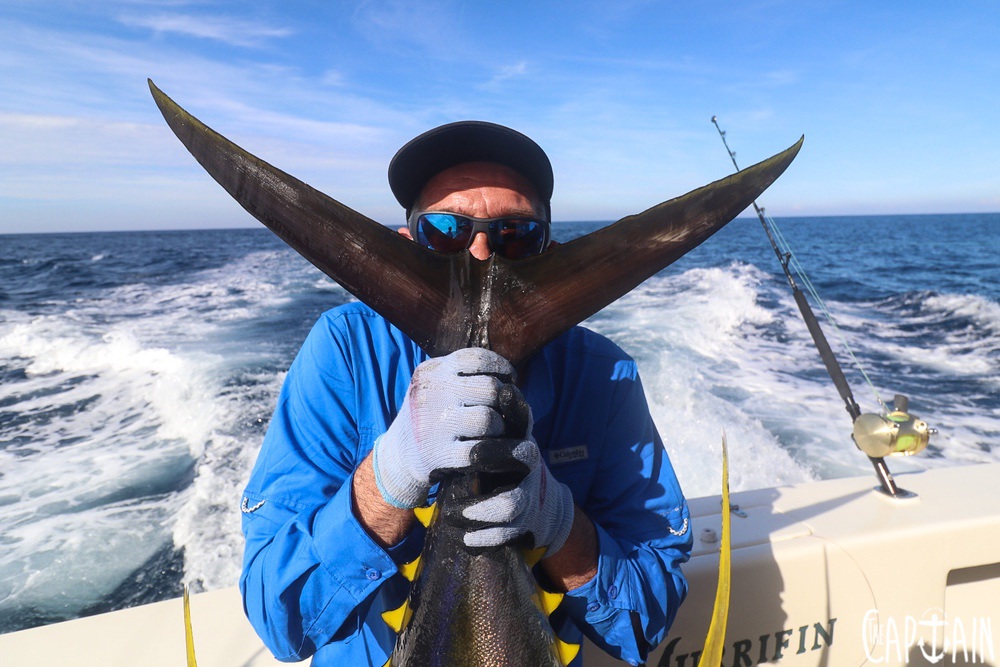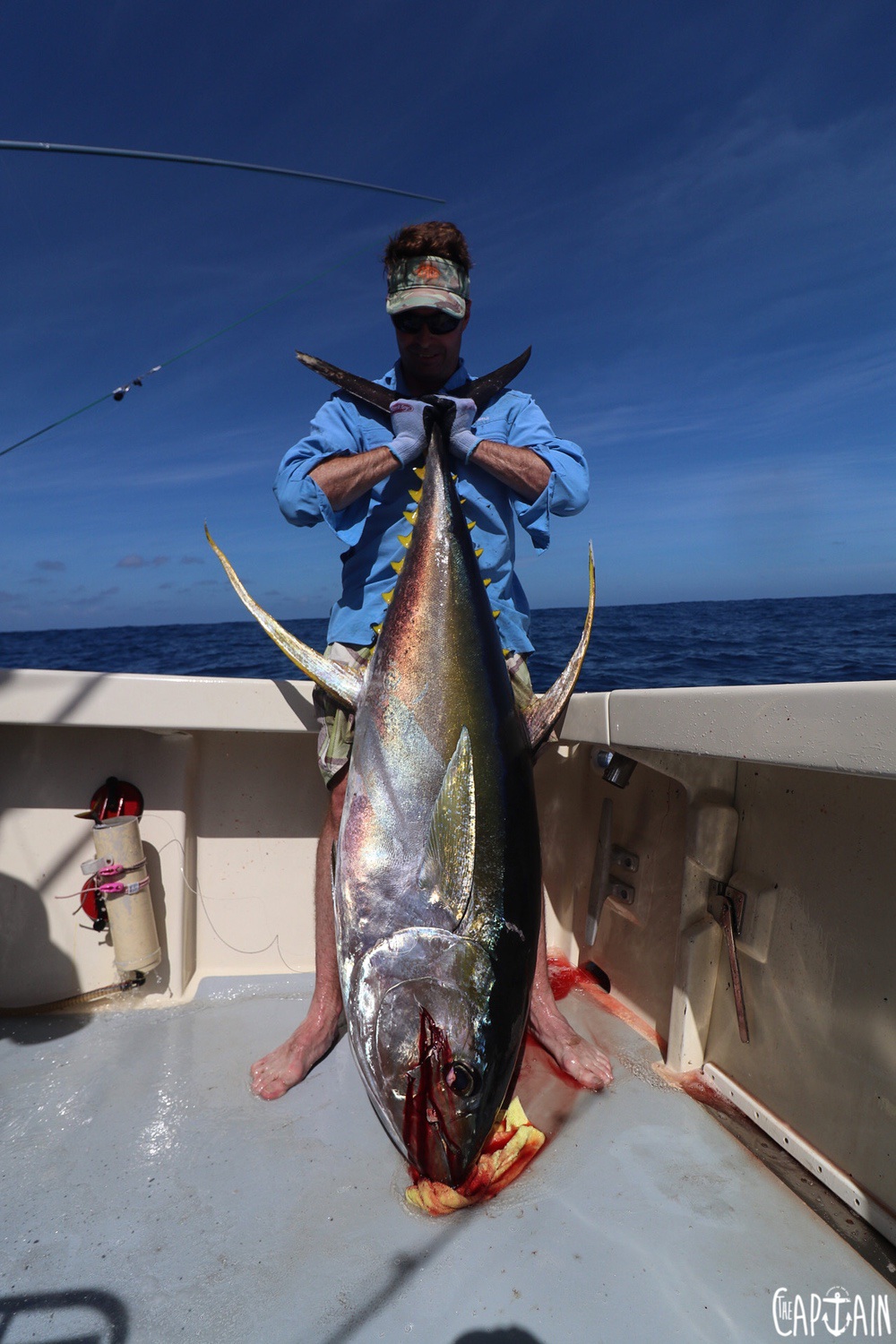Rod Findlay offers some top tuna tips to keep that sashimi train chugging. The tuna fishing on the east coast of NSW has been exceptional this year. In saying that, these fish aren’t off every port at the same time. They roll through on temperature breaks and slow sections of water — and stay where bait is holding them for a few days before they exhaust the supply and move on. From a skipper’s perspective, when you’re trying to plan your next trip (unless you’re restricted to one particular port) the last thing you want do is fish where the tuna were yesterday. Accurate tuna tracking is the top trick to maximise your chances of hitting it hard — but it takes a bit of homework to get right. It’s a three-step process.
01 Trawl the SST charts. I use the RipCharts app on my phone and I’m looking for a water temperature break, change or edge within one or two degrees of the yellowfin’s preferred temperature range. Off Sydney, that’s historically between 19ºC and 24ºC — with 21.5ºC the magic number for a lot of fishos. Ideally, the zero line of the altimetry chart is not far away from the break, either. What is this “altimetry” you ask? It’s the spot between the ocean’s upwellings and downwellings that offers least resistance to finny things. Fish, naturally, like to hang there. If you can find these two items lining up in an individual image or a granule image — as opposed to a more delayed composite or blended image — that’s your cue to check weather, boat and gear, and plan your assault.
02 The second part of the equation is usually overlooked — checking where that edge has travelled from historically. What you’re trying to do here is gauge how fast the edge is moving. Every SST is delayed and historical, so with that in mind, you need to check from image to image, and try to assess the speed the break is tracking. For example, if the edge is moving five nautical miles in 24 hours and your last clear image is the night before your planned trip, you’re going to have to predict where the edge will be. If you simply run to the previous night’s location, you’ll probably be five to 10nm out of position.
03 Find a few mates to fish that same area on the same day from their own boats. The more lures, eyes and boats in your target area, the better chance of striking gold. This is where belonging to a local game-fishing club can pay dividends, as there’s normally a bunch of crews fishing consistently. Once you’ve found a boat or two to share intel with, and got a team together, it’s best to coordinate search areas so you’re not all in the same spot at the same time. Have one boat on the cool side of the break and one searching the warmer side. Don’t fish on top of each other and try to keep a good two to five-mile spread until one of you spots fish signs — or, even better, hooks up. And make sure you use a simplex VHF channel to communicate, so you’re not giving the whole coast your updates via a repeater if you’re out of phone range. Doing your homework will put you close to the fish for longer and more often, which will drive up your success rate. But it won’t guarantee a bite. That’s the next problem you have to solve.






Recent Comments